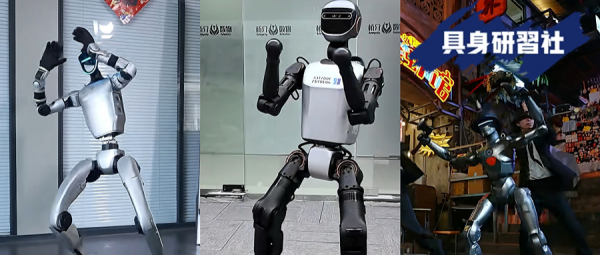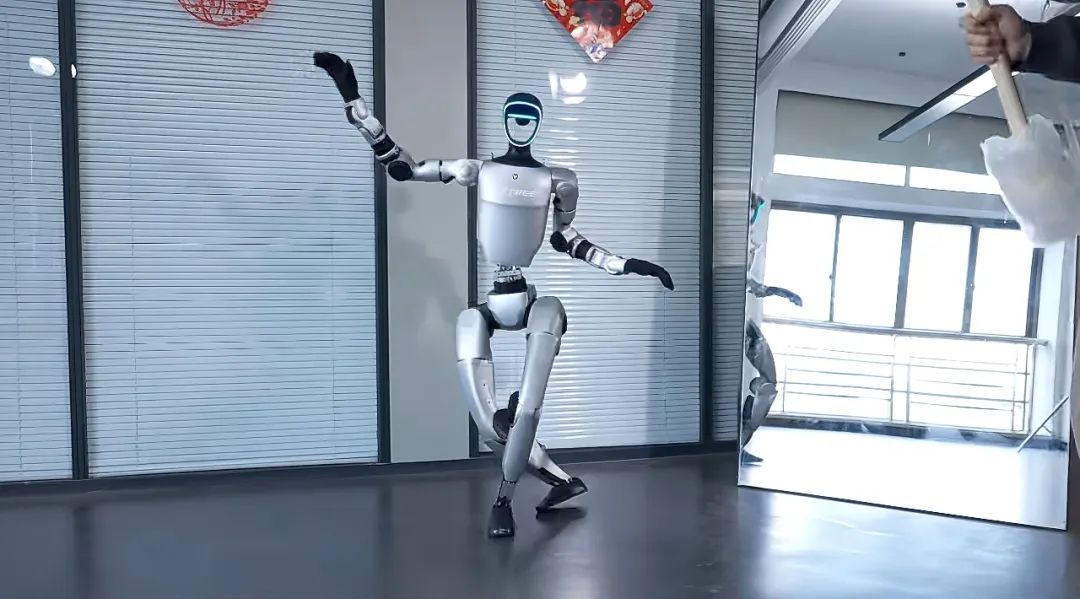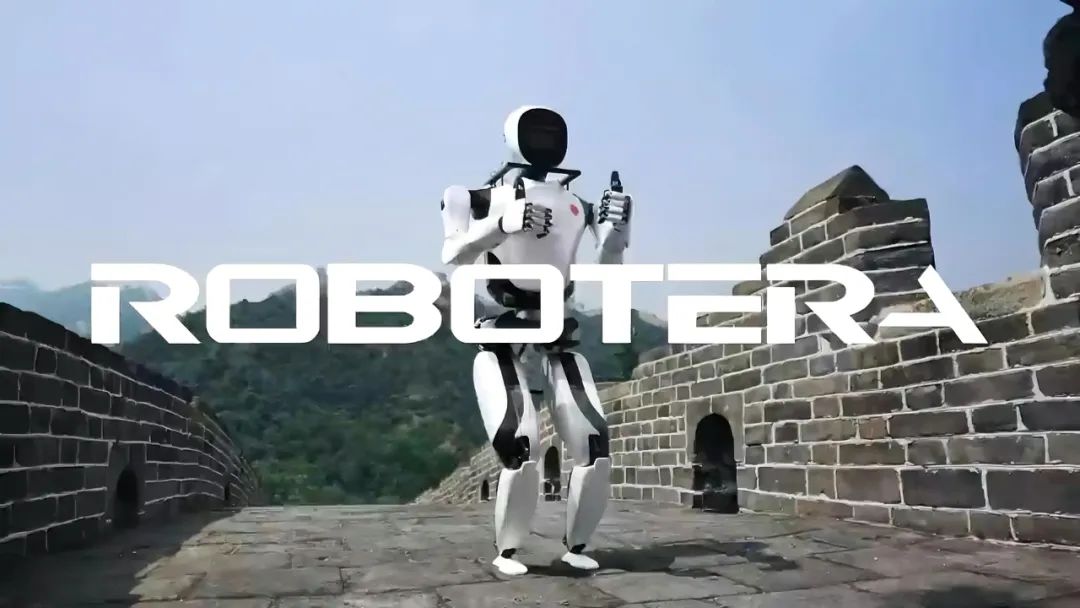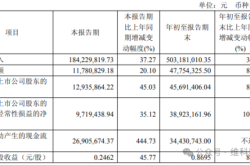Beyond Kung Fu and Backflips: The Future of Humanoid Robots
![]() 03/19 2025
03/19 2025
![]() 529
529

Each backflip is a harmonious blend of computing power, algorithms, and sensor systems, while every robotic dance is an extreme test of precision transmission and dynamic balance. When humanoid robot manufacturers showcase their stunts in short videos, they are truly displaying the keys to future factories and the gateway to a new industrial era.
Editor: Di Xintong
"What's the point of this thing?" – This question has almost become the soundtrack to humanoid robots' flashy displays.
Whenever humanoid robot manufacturers showcase flashy videos, the outside world wonders about their "meaningfulness." A philosophical question about assembly lines arises: it seems that humanoid robots that can perform dance moves and crazy backflips have no place in factory scenarios, nor do they serve as cheerleaders in workshop settings.

Image source: Unitree Technology
So why do manufacturers still enjoy showcasing these "stunts," or, in other words, what is the deeper meaning behind these demonstrations?
This seemingly absurd technological ballet is actually an undercurrent of industrial competition. Leading players are using the parabolic arcs of backflips to outline the coordinate system for the development of new industrial productivity; they are using the centimeter-level precision of robotic dance steps to write the password for the next generation of flexible manufacturing.
These acrobatic shows that push the limits of physics are essentially love letters to the market and pledges of allegiance to the industrial ecosystem.
"Flashy displays are the shortest path to maximize exposure. They may not provide an intuitive understanding of the true skill points, but they can touch upon emotional points for dissemination," said a relevant person from a humanoid robot manufacturer to the Embodied Learning Society.
In the view of the Embodied Learning Society, behind the flashy displays lies the support of multi-dimensional technical collaboration. Those deeply involved in application scenarios can understand their profound meanings and gain insight into the true level of technology. Those outside the application field can also enjoy the spectacle and gain a simple understanding of the development pace of humanoid robots. In the early stages of the industry, this is a win-win communication route that can drive double penetration of awareness of new productivity.
On the long march towards the large-scale implementation of humanoid robots, every backflip is a synergy of computing power, algorithms, and sensor systems, and every robotic dance is an extreme test of precision transmission and dynamic balance. When humanoid robot manufacturers showcase their stunts in short videos, they are truly displaying the ticket to future smart factories and the pass to the new industrial era.
After all, today's acrobatic troupe may become tomorrow's all-around ace on the production line.

Behind the "flashy displays" lies the ultimate motion control capabilities of the "cerebellum"
When multiple humanoid robots can conquer hundreds of steps and achieve stable walking or running on various complex terrains such as grass and rubble; when Unitree Technology's G1 performs roundhouse kicks and smooth dance steps; when Zhongqing Robotics stages a "gang of axe-wielders" group dance, it is the manifestation of the "cerebellar" motion control behind it.

Image source: Zhongqing Robotics
While it is unlikely that humanoid robots will perform "Great Wall-like" movements or jump through "driving test maneuvers" daily in practical applications, these feats represent the ability of humanoid robots to achieve highly complex movements without being interfered with by too many external factors.
If it can dance, it can learn to load and unload materials in factories; if it can climb stairs, it can work outdoors.
From a technical perspective, the core of the humanoid robot's "cerebellum" lies in achieving precise trajectory planning and complex motion control (including functional modules such as limb and posture balance). Its hardware architecture comprises four core components: controllers, servo drives, motors, and sensors. The key points of this system are:
Precision of motion control: Taking the "grasping action" of a humanoid robot as an example, the "cerebellum" needs to precisely control parts such as the body and dexterous hands, enabling them to accurately reach the object's position and flexibly call upon different forces and postures to grasp;
Smoothness of motion coordination: Enabling all parts of the robot's body to work closely together, with smooth and natural movements;
Maintenance of balance and stability: Ensuring that the humanoid robot maintains a stable posture without accidents during actions such as walking, running, and turning;
Adaptability to complex environments: Automatically recognizing features and adjusting motion modes and control parameters in different terrains to cope with varied characteristics.
It is precisely relying on the technological leap of the "cerebellum" that humanoid robots can "move precisely." Any deviation in "cerebellar" motion control can lead to struggles in completing expected actions, or even "loss of control," causing significant losses in factory workshops.
Specifically, based on the motion control capabilities of the "cerebellum," humanoid robots can break through the shackles of "stability" and "versatility." Firstly, it changes the perception that bipedal stability is poor and unsuitable for factory applications, truly appearing in factories with steady footwork; secondly, it can work in outdoor scenarios such as booster stations and power inspections in desert terrains, broadening the boundaries of real applications and exerting the true value of new productivity by assisting humans in completing complex and harsh work.
In addition to controlling the entire "body," the technological breakthroughs in the "cerebellum" also endow humanoid robots with upper limb manipulation capabilities, enabling them to perform refined work. For example, the first humanoid robot from Yuejiang Robotics can accurately complete tasks with a precision of ±0.05mm, smoothly performing fine actions such as picking up cherry stems and covering coffee cup lids; Zhiyuan Robotics' Lingxi X2 can complete actions such as sewing grapes and brewing coffee.
It can be seen that the "brain" is the foundation for humanoid robots to understand and perceive the physical world, while the "cerebellum" is the key bridge linking the digital world and the physical world. What manufacturers display to the outside world is not just "fancy footwork" but a subtle indication that the "cerebellum" is maturing, and the work tasks their products can perform have been significantly improved.
With the continuous iteration and optimization of "cerebellar" technology, humanoid robots will demonstrate their unique value in more vertical fields. In industrial scenarios, their high-precision motion control capabilities will drive flexible manufacturing to a higher level; in special operations, the ability to adapt to complex environments will significantly improve operational efficiency and safety; in service scenarios, refined operations and smooth movements will bring a more natural human-machine interaction experience.

The body seeks a balance between agility, endurance, and operation
In addition to the "cerebellar" motion control capabilities, the real interaction between humanoid robots and the physical world also requires the support of the "body." For example, multiple humanoid robot manufacturers have performed the "backflip" skill, a feat that most humans cannot achieve, realized through the combined efforts of the "cerebellum" and the "body" structural design. On the body side, designs such as reducing the overall weight of the machine are implemented to achieve a balance between lightweight and high performance.
From a technical perspective, the body structure of a humanoid robot is mainly composed of core components such as motors, reducers, sensors, and joints. From the perspective of body structure design, the weight of each component is a core element for it to complete skills, related to multiple aspects of capabilities:
Motion performance: Heavier robots may be more stable during movement but will be affected in terms of rapid movement and flexibility, limiting their speed and agility;
Endurance: Weight directly affects energy consumption. Heavier humanoid robots consume more energy when performing tasks, making it difficult to truly achieve quality and efficiency improvements;
Weight distribution: Weight distribution affects the robot's balance and motion precision.
Operational capability: In terms of operational capability, heavier robots can handle heavier loads but may sacrifice flexibility and fine manipulation capabilities.
To address the issue of body weight, multiple humanoid robot manufacturers have come up with different solutions, such as reducing weight through self-developed joint modules, motors, and other core components. There are also other solutions to mitigate the impact of weight on functionality. Zhongqing Robotics once faced a situation where adding a mere 500g head during a "frontflip" test caused the robot's center of gravity to become unbalanced, reducing the success rate of flips. Ultimately, by instantly switching to walking mode after landing, it buffered inertia and enhanced landing stability.
In addition to weight, manufacturers will also enhance certain attributes to better adapt to different application scenarios. For example, robots that are constantly evolving by running and playing football on the field every day have a body structure that is more resistant to falls and impacts, demonstrating abilities such as "breaking stones on the chest" and "smashing beer bottles on the head" in videos. Its mapping to application scenarios is that the acceleratingly evolving robots are more fearless of collisions in football matches.

Image source: Accelerating Evolution
If the "cerebellum" is the first link in motion control, then the body structure design is an important link for humanoid robots to work smoothly and show off their skills in the physical world.
Currently, most humanoid robot manufacturers choose to showcase the advantages of their solutions to the outside world through videos of high-difficulty movements. After all, testing whether a body structure is reasonable requires a long-term demonstration. However, a more intuitive stage may be provided by the upcoming "Humanoid Robot Marathon" to be held in Beijing.
Liu Weiliang, Deputy Director of the Beijing Municipal Bureau of Economy and Information Technology, said that the marathon tests the robot's stability, reliability, and endurance. For a humanoid robot to complete a marathon, it needs to break through key technologies such as body architecture and joints, high-reliability long-distance running algorithms, and testing and verification.
To complete a marathon, high-power-density integrated joints and their heat dissipation technology are required, optimizing joint motion range, optimizing bionic soles, breaking through battery energy density, and solving joint overheating issues.
This will be a competition that comprehensively tests the body structure design and motion control capabilities of humanoid robots.
With the coevolution of "cerebellar" motion control and body structure design, humanoid robots are gradually breaking through the barriers of interaction with the physical world. These technological breakthroughs will directly drive the practical application process of humanoid robots in industrial, service, and other scenarios. In the future, with continuous advancements in materials science, control algorithms, and energy technology, humanoid robots are expected to achieve a more lightweight and higher-performance body design, ultimately achieving perfect interaction with the physical world.

The industry needs "meaningless" flashy videos
By peeling away the nonsensical exterior of humanoid robots' "flashy videos," we can glimpse the dual profound meanings behind manufacturers' video releases: on the surface, it is a visual display of technical prowess, and at a deeper level, it is an important window for building dialogue with the outside world.

Image source: Star Evolution
Looking back at history, although humanoid robots have gone through a century of development, they have long been trapped in the "ivory tower" of laboratories, and public perception has mostly remained at the imaginative level of science fiction movies. It is only in recent years, with technological breakthroughs, that this field has truly embarked on the industrialization process from laboratories to application scenarios, entering an early stage of development.
At this critical stage, "market education" has become a common mission for all participants.
As a result, a series of seemingly "whimsical" videos have emerged. They are not only a showcase of technical prowess but also an important medium for promoting public awareness and understanding.
Unitree Technology has contributed a classic case.
Since their debut on the Spring Festival Gala, Unitree's robots have transformed into "traffic magnets," heralding a new era in commercial leasing. From serving as "check-in gadgets" for business events to becoming "eye-catching tools" for brand marketing, Unitree robots have frequently gone viral. For instance, they were spotted at the Ambrosia booth, adorned in cheerleading attire and holding yogurt, effectively drawing customers' attention. Even in the realm of internet celebrity livestreams, often referred to as "traffic harvesting machines," Unitree Technology has emerged as a "traffic hotspot," captivating audiences through "unboxing and reviewing" segments.
It's noteworthy that all these actions are secondary disseminations initiated by genuine users. While generating traffic for themselves, users inadvertently facilitate Unitree Technology's reach, fostering a ripple effect of dissemination that continuously attracts more traffic.
Unitree Technology's journey beyond its initial circle mirrors the gradual acceptance of humanoid robots by the outside world. The birth of any new industry or technology necessitates a prolonged period of market cultivation.
As products that integrate cutting-edge technology, humanoid robots may encounter more controversy and seemingly disorganized development. However, these are essential steps towards our future. This industrial transformation, fueled by technological innovation, will not only reshape the manufacturing landscape but also redefine the future paradigm of human-machine collaboration.
When humanoid robots eventually become a part of everyday life, we might realize that those videos once deemed as mere "flashy displays" were, in fact, the prelude to this transformative era.








